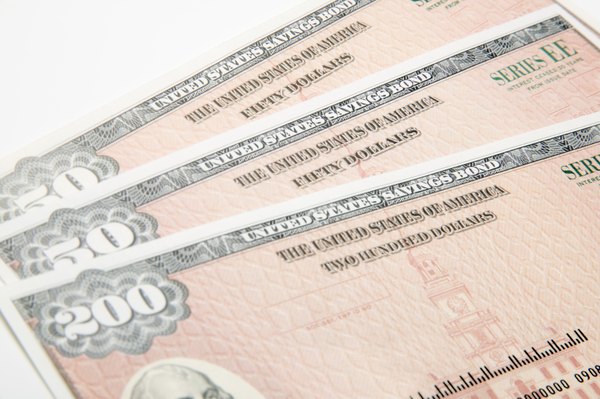When an I or E Savings Bond Matures Is It Worth More Than the Face Amount?
U.S. Savings Bonds can be worth more than face value at redemption.
Creatas/Creatas/Getty Images
U.S. savings bonds came on the scene shortly before World War II as a safe, secure, long-term investment backed by the full faith and credit of the federal government. Since World War II, there have been several series of savings bonds offering different interest rates and maturity terms in line with general economic conditions of the time. They include Series E, EE and I.
Tip
Bonds that were sold at face value earn interest until they mature, which means you'll cash out at amount that is above the face value printed on the bond.
Series E Bonds
Series E savings bonds were first sold in May 1941 and were discontinued at the end of June 1980. According to U.S. Treasury bond redemption tables, all Series E bonds have reached final maturity and no longer earn interest, but they're worth roughly four to eight times their original face value depending on denomination and the year of issue.
For example, a $1,000 Series E bond bought in June 1980 reached final maturity in June 2010 with a redemption value of $4,470. They were sold only in paper form with face values ranging from $10 to $1,000. Buyers paid 50 percent or 75 percent of the face value depending on the year. E bonds paid interest of 3.9 percent to 6.7 percent depending on when they were issued.
Paper EE Bonds
The discontinued Series E bonds were replaced by the current Series EE bonds in July 1980. Paper EE bonds were issued from July 1980 through December 2011 in denominations of $50 to $10,000. All paper EE bonds will be worth more than their face value if they're held to full maturity at 30 years.
These bonds were sold for half their face value so you would have paid $500 for a $1,000 bond. They were guaranteed to be worth their face value after 20 years and earned additional interest until final maturity at 30 years. Any EE bond bought before 1983 was fully mature by 2012 and has stopped earning interest. For example, a $1,000 Series EE bond purchased in July 1980 reached final maturity in July 2010 and can be redeemed for $3,348.
The last paper EE bonds will reach final maturity in 2041.
Electronic EE Bonds
Face value of EE bonds became meaningless when the Treasury stopped issuing fixed-denomination paper EE bonds in favor of electronic bonds in January 2012. You pay the full principal amount at purchase with electronic EE bonds for any amount above $25 with an annual purchase limit of $10,000.
The Treasury guarantees an electronic EE bond will be worth twice its purchase price if it's held for 20 years and it will continue to add interest for another 10 years. You'll get back your purchase price plus accumulated interest at the 30-year final maturity date. All electronic EE bonds held to final maturity will be worth more than twice what you paid for them.
Series I Bonds
The inflation-indexed Series I savings bonds were introduced in September 1998. The first issues will reach final maturity in 2018. Paper I bonds have face denominations of $50 to $10,000 and have always been sold at full face value.
Electronic Series I bonds have always been sold at full principal value in any amount above $25 with a $10,000 annual purchase limit. Interest is adjusted every six months. Buyers will receive their principal plus accumulated interest at bond maturity. If a Series I bond earns any interest at all during its 30 year maturity period, it will be redeemable for more than its face value or purchase price.
The Treasury guarantees that the redemption value of a Series I bond will never go down, even if the country suffers a catastrophic deflation, because the interest rate on I bonds cannot go below zero.
References
Resources
Writer Bio
Herb Kirchhoff has more than three decades of hands-on experience as an avid garden hobbyist and home handyman. Since retiring from the news business in 2008, Kirchhoff takes care of a 12-acre rural Michigan lakefront property and applies his experience to his vegetable and flower gardens and home repair and renovation projects.

